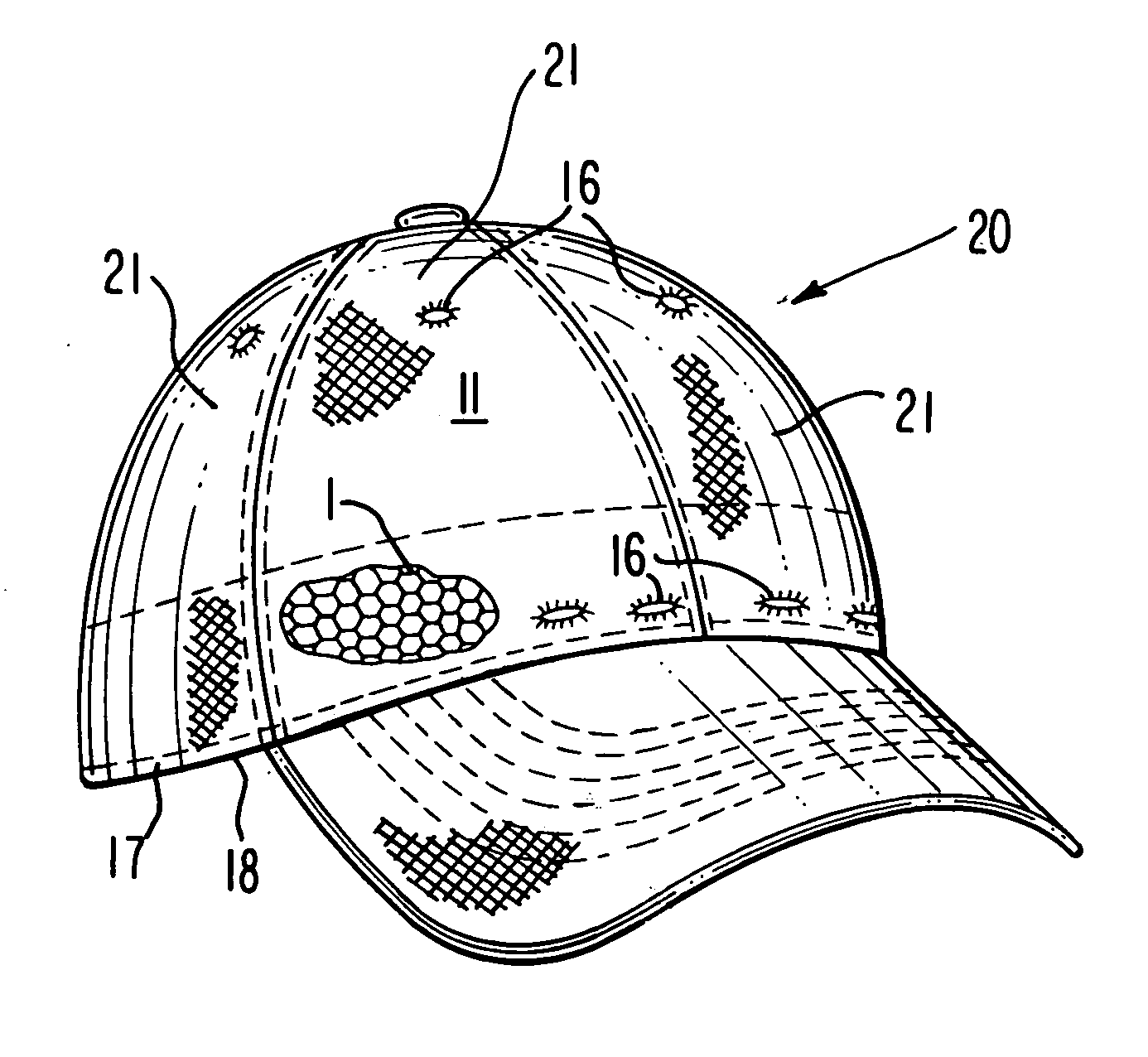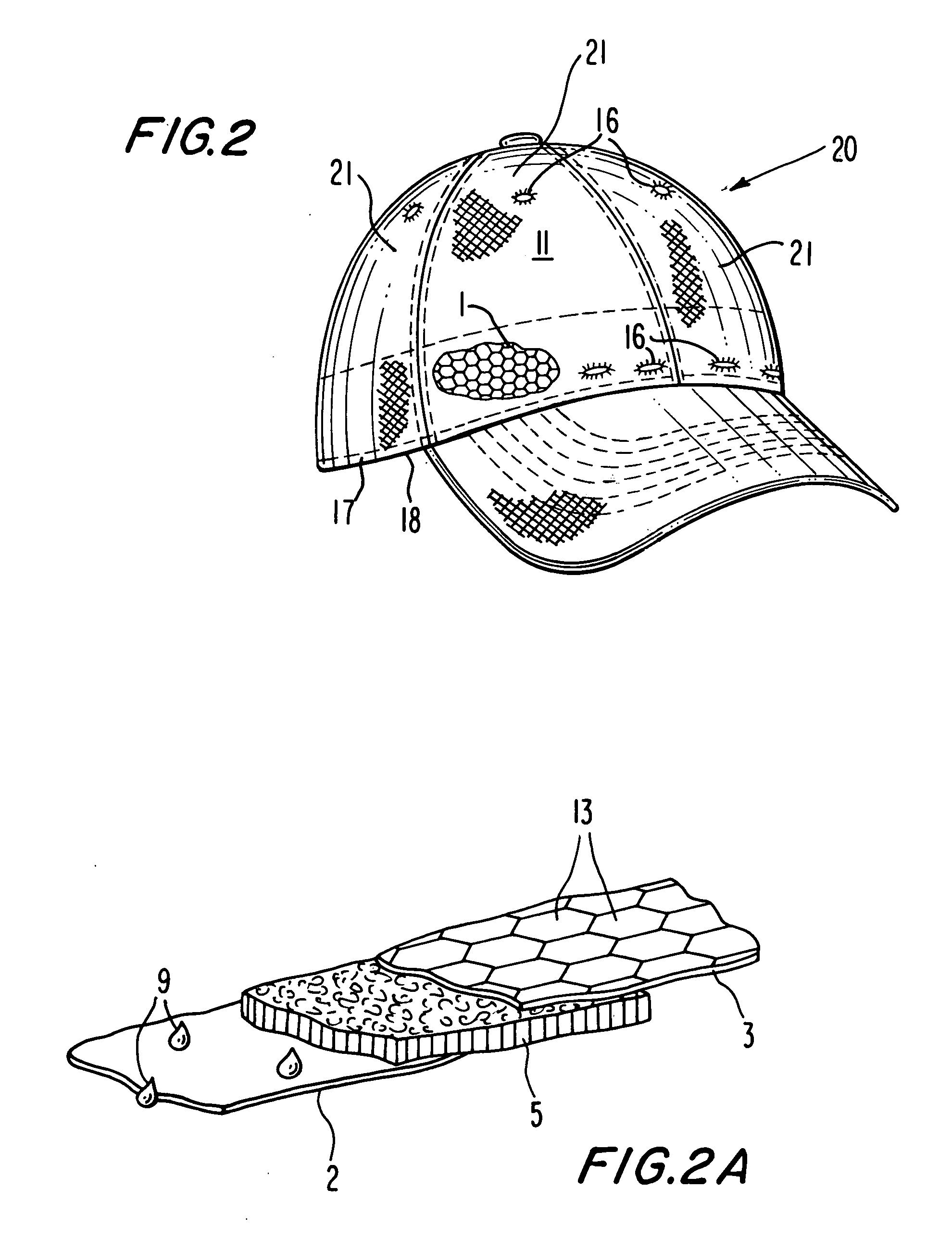Sweat blocking and ventilating sweatband for headwear
a technology for ventilating sweatbands and headwear, applied in the field of inside hat bands, can solve the problems of unsightly exterior sweatstains that are difficult or impossible to remove, headbands also create uncomfortable hot spots on users' heads, and achieve the effect of preventing sweat migration, preventing sweat movement, and maximizing ventilation airspa
- Summary
- Abstract
- Description
- Claims
- Application Information
AI Technical Summary
Benefits of technology
Problems solved by technology
Method used
Image
Examples
Embodiment Construction
.
[0025] Referring now to the drawings, and first to FIG. 1, the spacer-fabric sweatband comprises inner (skin-contact) 2 and outer (headwear-facing) 3 fabric layers connected in spaced 4 relation by monofilament pile yarn(s) in a pile substructure 5 integrated with and extending between the layers 2 and 3 to form pile spacing elements 6 extending transversely between the layers at regular intervals throughout the spacer fabric. The pile spacing-elements 6 maintain the layers 2 and 3 in spaced 4 parallel relation yet are resiliently compressible and maintain considerable open pile-supported airspace 7 between the layers 2 and 3 to facilitate the movement of ventilating airflow shown by arrow 8. The transverse pile spacing-elements 6 also function to block sweat 9 migration from the inner, skin-contact layer 2 to the outer, headwear-facing layer 3 by virtue of their hydrophobic composition and selection of a spacing-interval 10 between spacing-elements 6 that inhibits capillary action...
PUM
 Login to View More
Login to View More Abstract
Description
Claims
Application Information
 Login to View More
Login to View More - R&D
- Intellectual Property
- Life Sciences
- Materials
- Tech Scout
- Unparalleled Data Quality
- Higher Quality Content
- 60% Fewer Hallucinations
Browse by: Latest US Patents, China's latest patents, Technical Efficacy Thesaurus, Application Domain, Technology Topic, Popular Technical Reports.
© 2025 PatSnap. All rights reserved.Legal|Privacy policy|Modern Slavery Act Transparency Statement|Sitemap|About US| Contact US: help@patsnap.com



